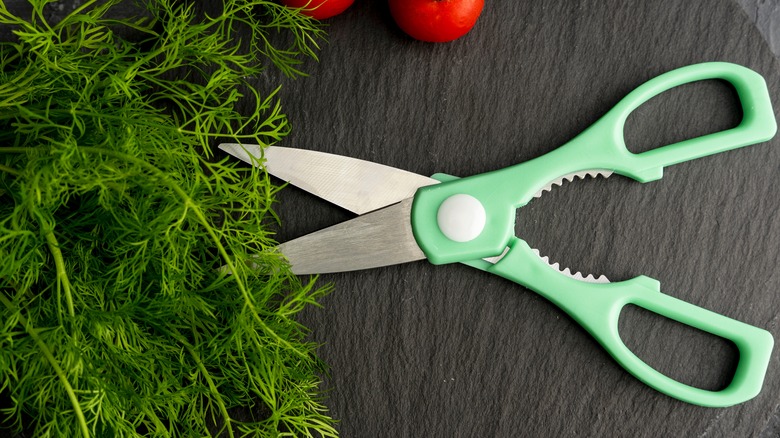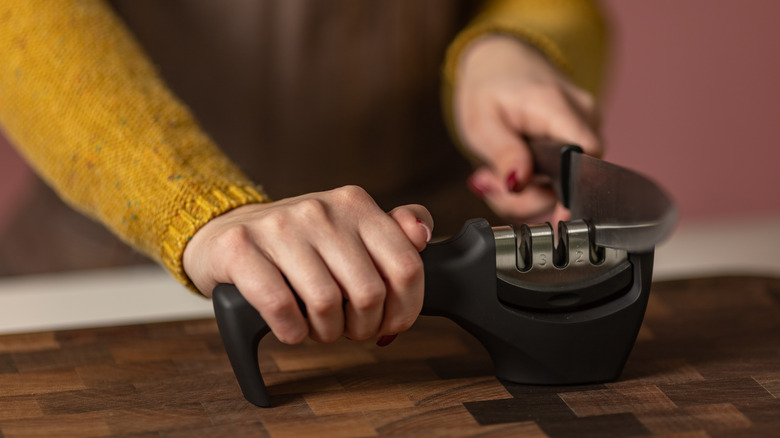Aluminum Foil Is The Secret To Sharpening Kitchen Shears In A Pinch
We may receive a commission on purchases made from links.
Most kitchens have a dedicated, trusty pair of shears. Initially, your kitchen shears are sharp enough to open up wine bottles, cut through packaging, and slice food like it's nothing. However, after some time, the blades get dull, creating a less-than-impressive (and, honestly, sometimes frustrating) tool that struggles to cut through anything.
Instead of buying a new pair, try a short-term fix that hones your dull kitchen scissors with an at-home staple: aluminum foil. Grab your roll from the pantry, tearing off a foot-long piece. Then, fold this piece over itself a minimum of six times to create an accordion-like shape that's multiple layers thick. From here, you'll make as many full-length cuts as possible, slicing through all the layers simultaneously. (Don't forget to cut through the foil with caution, since the numerous opaque layers block the visibility of your hand on the other side.) Remove any small scraps of foil that may be lingering on the blades, and test your fresh shears on scrap paper to reveal a satisfactory cut.
More ways to sharpen your shears
If honing your blades using aluminum foil doesn't produce the result you desire, other tricks exist to revive your shears. Another hack is to use 200-grit sandpaper. Fold the sandpaper so both rough sides face out, then make a few full-length cuts through the paper before wiping off any fine residue. Voilà — you'll have a sharp tool perfect for mistake-free pizza slicing, dicing up tiny bites for your kids, and more.
If neither of the previous methods works, then it might be time to purchase an at-home sharpening tool (like Kitchellence's three-stage knife sharpener), which is a simple gadget that straightens, refines, and sharpens the edge of each blade into a pointed V-shape. To get the best outcome, separate the blades and sharpen them individually, much like a standard kitchen knife. Most kitchen scissors come apart in the center, and they're held together directly above the metal teeth on your shears.
Look for some locking mechanism or screw that is keeping the two blades together and sharpen them individually, drawing each one carefully through every slot if you're using a multi-stage sharpener; reassemble the pair for kitchen scissors that cut like new. You can forego the step of separating the blades if you're short on time by opening the scissors and sharpening them one at a time. However, doing so might stop you from reaching the entirety of the blade, leading to inconsistent results.


